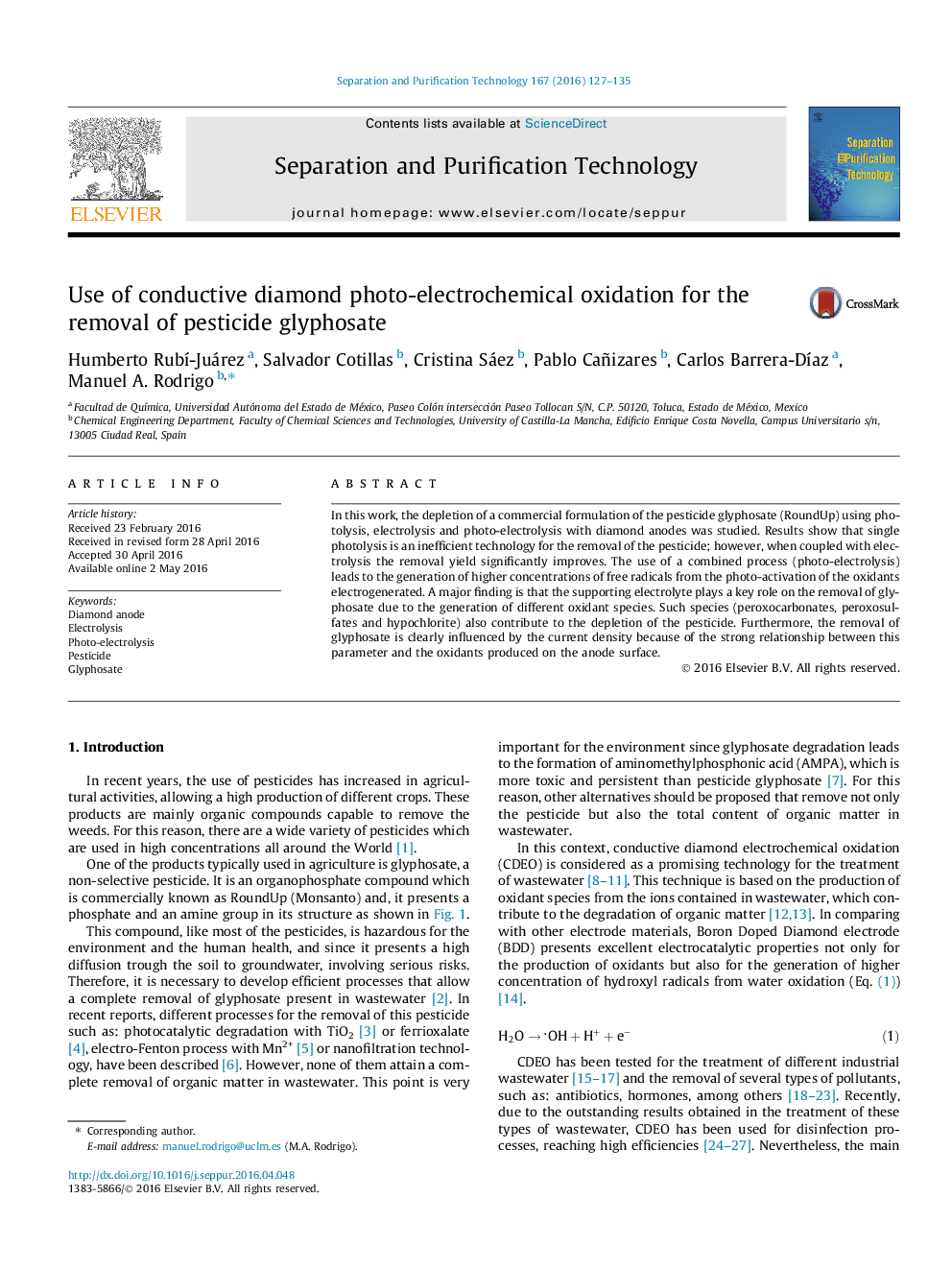| Article ID | Journal | Published Year | Pages | File Type |
|---|---|---|---|---|
| 639862 | Separation and Purification Technology | 2016 | 9 Pages |
•Single photolysis does not achieve the oxidation of glyphosate from wastewater.•Coupling photolysis and electrolysis improves the total mineralization of glyphosate.•Free sulfate radicals play an important role in the mineralization of glyphosate.•Antagonistic effects were produced by UV light in electrolysis with carbonate and chloride.
In this work, the depletion of a commercial formulation of the pesticide glyphosate (RoundUp) using photolysis, electrolysis and photo-electrolysis with diamond anodes was studied. Results show that single photolysis is an inefficient technology for the removal of the pesticide; however, when coupled with electrolysis the removal yield significantly improves. The use of a combined process (photo-electrolysis) leads to the generation of higher concentrations of free radicals from the photo-activation of the oxidants electrogenerated. A major finding is that the supporting electrolyte plays a key role on the removal of glyphosate due to the generation of different oxidant species. Such species (peroxocarbonates, peroxosulfates and hypochlorite) also contribute to the depletion of the pesticide. Furthermore, the removal of glyphosate is clearly influenced by the current density because of the strong relationship between this parameter and the oxidants produced on the anode surface.
